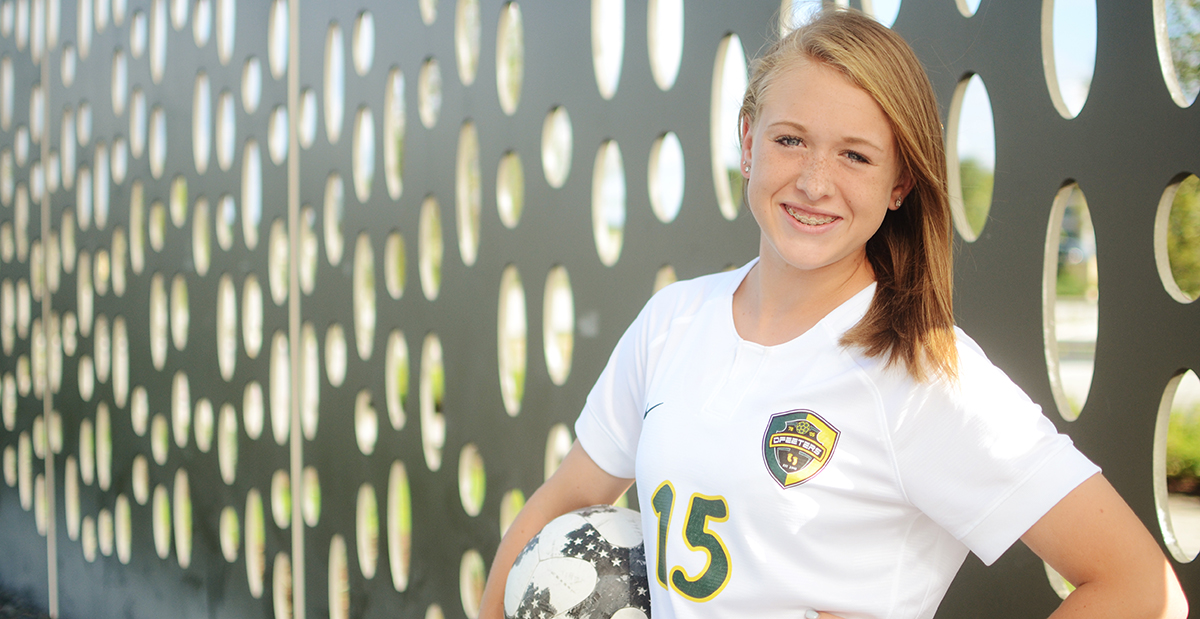
Apr 29, 2020 / Sports Medicine
Add Core and Hip Training to Any Program
Something many young athletes with leg injuries have in common is strength deficits, or weakness, in their core and hips. A physical therapy evaluation after an injury to the knee or ankle always includes the assessment of hip and trunk strength as well. Physical therapists in our sports medicine center often find signs of weakness in these areas during functional movement as well as isolated strength testing. Hip and core exercises are an essential portion of an athlete’s program.
We asked an expert on our therapy services team to tell us a little about why core and hip exercises should be part of all training programs. Julia Buckelew, P.T., D.P.T., O.C.S. tells us, “Our hips and core set the foundation for our movement.” When an athlete’s hips and core are working together and functioning at their optimal level, the athlete can complete activities with less effort and improved body mechanics. Julia says, “Proper hip and core activation promote improved efficiency of movement and can assist in reducing injury risk by improving movement quality.”
Young athletes tend to focus on sport-specific training, activities that directly mimic their sport. Julia advises that a diverse cross training program can help improve strength, power, endurance, flexibility, motor control, balance, speed and proprioception (body awareness). When done properly, cross training allows the athlete to enhance their health and performance without exposing their bodies to excessive high repetition tasks.
When the athlete focuses their training exclusively on the “mover muscles” and does not include exercises to improve their “stabilizing muscles” (like the core), the athlete may have difficulty achieving and maintaining proper positioning for activities required of their sport (or in performance).
Julia’s Top Tips for Hip and Core Stabilization
Integrate these into your workout a few times each week:
Recommended exercises to strengthen the stabilizers in the hips and core:
Learn more about pediatric sports medicine.
We asked an expert on our therapy services team to tell us a little about why core and hip exercises should be part of all training programs. Julia Buckelew, P.T., D.P.T., O.C.S. tells us, “Our hips and core set the foundation for our movement.” When an athlete’s hips and core are working together and functioning at their optimal level, the athlete can complete activities with less effort and improved body mechanics. Julia says, “Proper hip and core activation promote improved efficiency of movement and can assist in reducing injury risk by improving movement quality.”
Young athletes tend to focus on sport-specific training, activities that directly mimic their sport. Julia advises that a diverse cross training program can help improve strength, power, endurance, flexibility, motor control, balance, speed and proprioception (body awareness). When done properly, cross training allows the athlete to enhance their health and performance without exposing their bodies to excessive high repetition tasks.
When the athlete focuses their training exclusively on the “mover muscles” and does not include exercises to improve their “stabilizing muscles” (like the core), the athlete may have difficulty achieving and maintaining proper positioning for activities required of their sport (or in performance).
Julia’s Top Tips for Hip and Core Stabilization
Integrate these into your workout a few times each week:
Recommended exercises to strengthen the stabilizers in the hips and core:
- Side plank with hip abduction – while in a side plank position, lift upper leg ten times; keep body aligned in one plane.
- Single leg bridge – lie on back with knees bent and feet on the floor; raise one leg off the floor and then lift buttocks ten times. Push more through the heel of your foot to increase hip activation as needed.
- Single leg Romanian dead lift – stand holding a small dumbbell in your right hand; keeping a flat back, hinge forward as you lift your right leg to a parallel position. Perform 10 times and repeat on the left side.
Learn more about pediatric sports medicine.



